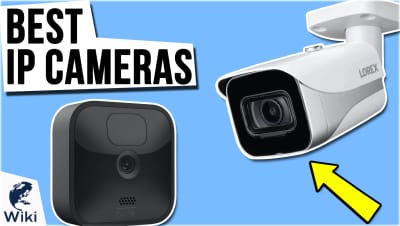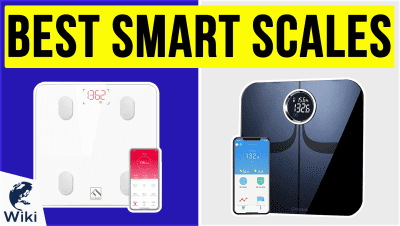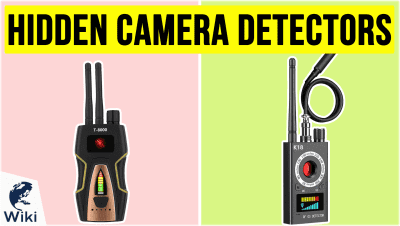Drone Vs. Helicopter - What Is The Difference?
We've all seen helicopters before, whether it's military helicopters in movies or the local news giving a traffic report. In recent years you've also probably heard a lot about drones, and seen what seem like remote-controlled helicopters being used at local parts. We'll go over the differences between personal quadcopter drones, military UAV drones, and helicopters so you'll know what people are talking about. If you're looking to purchase a hobby drone or remote-controlled helicopter as a gift, check out the list of the best RC helicopters and the top 10 kids drones to find out more. This video was made with Ezvid Wikimaker.
Can A Helicopter Be A Drone?
Yes, it can, if we define a drone as any unmanned vehicle. Most personal drones are quadcopters, which are more stable. Helicopters are best suited for piloted vehicles because they are easier to fly and require less energy. However, helicopter drones are more expensive, and the remote-controlled variety lack features that quadcopter drones offer like the ability to automatically return to a starting position.
What Type Of Drone Should I Buy?
There are many different types of personal drones available, with more offered every year. Here are a few categories so you can read up on them.
See What Can Be Filmed With A Drone
How Do I Put My Drone Footage Online?
If you own a personal quadcopter that is designed for recording video, and you've taken some cool shots on your vacation, it's understandable that you want to share it. However, this footage likely has no sound and isn't edited. If you aren't a professional filmmaker and don't want to spend days cutting together footage, a great option is Ezvid Wikimaker, a free online video editor that lets you choose the best moments from your footage and put them together with free narration, music, and fair use images and video clips to make the story you're telling entertaining and fun. Read up on how to use Ezvid Wikimaker for more information.
In Depth
You've likely heard the term "Drone" thrown around quite a bit lately. They're used by our military, by hobbyists, by filmmakers, and possibly soon to deliver products. Many people are discussing restrictions on their use because they are so popular. But when you see what looks like a remote control helicopter, is that a drone? Let's get our definitions straight so you can decide exactly what you're looking for or looking at.
Technically there is not a difference between drones and helicopters, because they are not mutually exclusive things. The word "Drone" is simply a popular term for any unmanned aerial vehicle. That means that any vehicle that flies and doesn't have a pilot inside the cockpit manually steering it would qualify as a drone, whether it's controlled by a human via a remote or by pre-programmed computer software. A drone could be made in the form of a helicopter, an airplane, or even a balloon.
This popular definition, however, is a bit too broad. Based on that understanding, even a missile would be considered a drone. Because of this, the military and the government have a stricter definition, which defines two terms, UAV and UAS.
Because of this, the military and the government have a stricter definition, which defines two terms, UAV and UAS.
UAV stands for "Unmmanned Aerial Vehicle," and is a flying aircraft piloted by remote control or software that is capable of reuse. This counts missiles out as they aren't capable of being reused. UAS, or "Unmanned Aircraft Systems," includes both the aircraft itself and any systems like the computers or remote used to control it.
Having these broad categories is useful because the military is always expanding its use of unmanned vehicles. The US Navy has created the UUV, or "Unmanned Underwater Vehicle." These are essentially remote-controlled submarines. The term "Drone" generally refers to any unmanned vehicle, which could be as complex as those used by our military or as simple as a remote control helicopter.
Though you don't see them as often as the quadcopter variety, helicopter drones are available, such as the Yamaha RMAX drone helicopter, a two-bladed unmanned gasoline-powered helicopter controlled by a remote pilot and used for a variety of agricultural and industrial purposes in Japan.
Though you don't see them as often as the quadcopter variety, helicopter drones are available, such as the Yamaha RMAX drone helicopter, a two-bladed unmanned gasoline-powered helicopter controlled by a remote pilot and used for a variety of agricultural and industrial purposes in Japan.
There are two big reasons why quadcopters are more popular than helicopter drones. These reasons are mechanical complexity and cost. The flight of a helicopter is controlled by the pitch of the rotor blades and the tail rotor. The parts responsible for adjusting the pitch are complicated and expensive. To make and repair a helicopter drone requires engineering knowledge as well as technology that can be pricey. Most people flying for fun are not going to shell out nearly $100,000 for one.
Quadcopters, on the other hand, are controlled by four fixed-pitch fan blades which spin at varying speeds to control flight. To make a quadcopter yaw or turn, one or two of the blades just increase or reduce their speed. They have very simple mechanics, with only one moving part, a fan attached to an engine. This makes them easier to produce, more reliable, and less costly. Popular personal drones like the DJI Phantom 4 Pro, the DJI Inspire 2, and the Parrot Bebop 2 Power all have this design.
These drones are more reasonably priced and can be anywhere from $100 to $3,000 depending on their features. The prices are low because of the simplicity of the design. Hobbyist helicopter drones that are reasonably priced are more rare, and mostly consist of remote control models which don't have autonomous flying software to allow them to get past line of sight operation or return to their take off point without human control.
Hobbyist helicopter drones that are reasonably priced are more rare, and mostly consist of remote control models which don't have autonomous flying software to allow them to get past line of sight operation or return to their take off point without human control.
Since quadcopters are simpler, you may wonder why pilots don't fly those instead of helicopters. While they are cheaper to produce and require less maintenance, they are not necessarily easier to fly. Quadcopters have a great deal of onboard software that stabilizes flight. Without it, they would be nearly impossible for a human to fly because there are too many variables to consider. Instead of controlling the pitch of one blade, the pilot would have to adjust and control four different fans simultaneously. This makes them impractical for piloted vehicles.
In addition to being much more complex to control and steer without the assistance of onboard software, the quadcopter design is also less efficient. Moving twice the amount of air at a lower speed is easier than moving less air at faster speeds. This means that helicopter blades can spin at a much lower speed than quadcopter blades, while still producing more lift.
Quadcopter blades are generally smaller than helicopter blades and spin at higher speeds. They also require energy to slow the blades during aerial maneuvers. Helicopters don't have to exhaust energy slowing the blades as adjusting the pitch controls all aerial maneuvers. Currently helicopters are capable of longer flight times than quadcopter drones on the same amount of energy.
Helicopters don't have to exhaust energy slowing the blades as adjusting the pitch controls all aerial maneuvers.
Hopefully this has shed a little light on the terminology of drones so that you'll understand what you're looking for when you go shopping for one. Drones can be made in any shape or size, including that of a helicopter. A drone is any moving vehicle without a pilot inside the craft, though when you hear your neighbors talking about "Drones," they're likely speaking of either a personal quadcopter or a military UAV. Feel free to stroll over and school them on the differences.
















